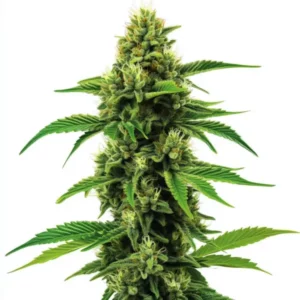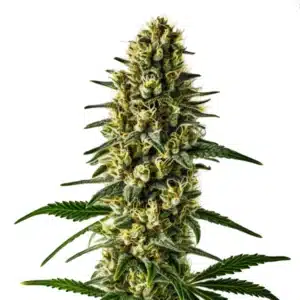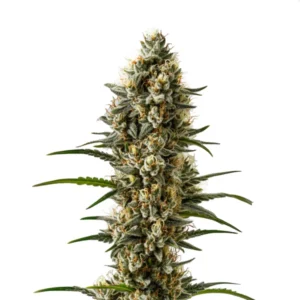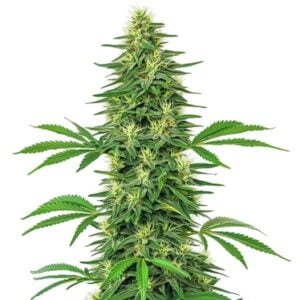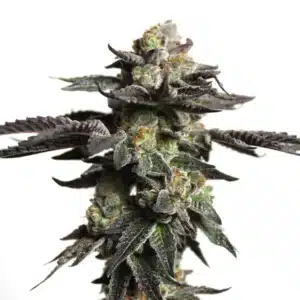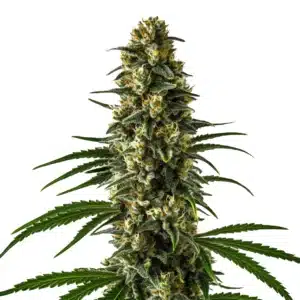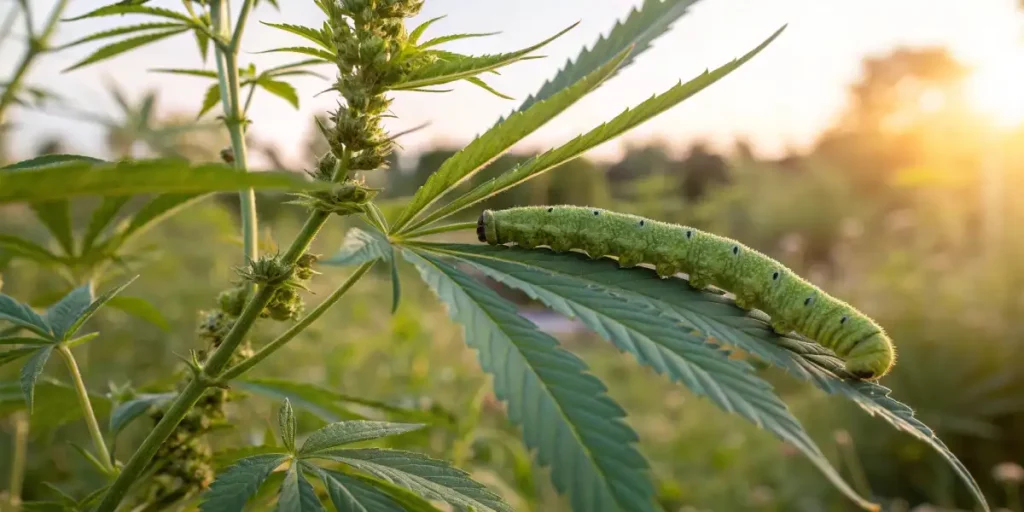
Green Caterpillar on Cannabis: A Grower’s Dilemma
Spotting a green caterpillar on cannabis plants is a sight no grower wants to see. These tiny invaders munch on your precious buds, leaving a trail of damage. They’re not just a nuisance; they’re a threat to your harvest. The key to managing these pests is early detection and prompt action.
The effects of these pests can be devastating. They directly harm the plant by feeding, and they can also attract other pests and diseases. In this guide, we’ll cover everything you need to know about these leaf-munching invaders.
Recommended Strains
Berry Z OG
|
|
THC | 15% - 19% (Medium) |
|
|
Type | Feminized |
|
|
Yield | High |
|
|
Phenotype | 60% Indica / 40% Sativa |
Banana Z OG
|
|
THC | 30% - 32% (High) |
|
|
Type | Feminized |
|
|
Yield | Medium |
|
|
Phenotype | 60% Indica / 40% Sativa |
Effects of Green Caterpillar on Cannabis Plants
Green caterpillars, or budworms, are larvae of moths and butterflies that feed on the leaves and buds of cannabis plants. The damage is typically visible as irregular holes, and in severe cases, it can stifle the plant’s growth.
More importantly, they can introduce mold and disease. A major risk is that the excrement left behind by the green caterpillar can turn into botrytis (bud rot) and other fungi. This ruins the flowers from the inside out, often making the entire bud unusable. A single caterpillar can consume a significant amount of plant matter, and they prefer to eat the buds, which are the most valuable part of the plant. The holes they create can also serve as entry points for other pathogens.
Promos & Deals
Removing Green Caterpillars from Cannabis
The most direct way to remove caterpillars is by hand. Arm yourself with a pair of tweezers and a keen eye. Carefully inspect the entire plant, but pay special attention to the underside of the leaves, as this is where caterpillars usually nest and lay their eggs. It’s a good practice to regularly inspect and clean these areas. Once you spot one, gently remove it.
Manual removal is most effective when the infestation is minimal. It’s best to perform this task during the cooler parts of the day when caterpillars are less active. If the infestation is severe, you might need to trim off heavily infested parts of the plant or use natural insecticides.
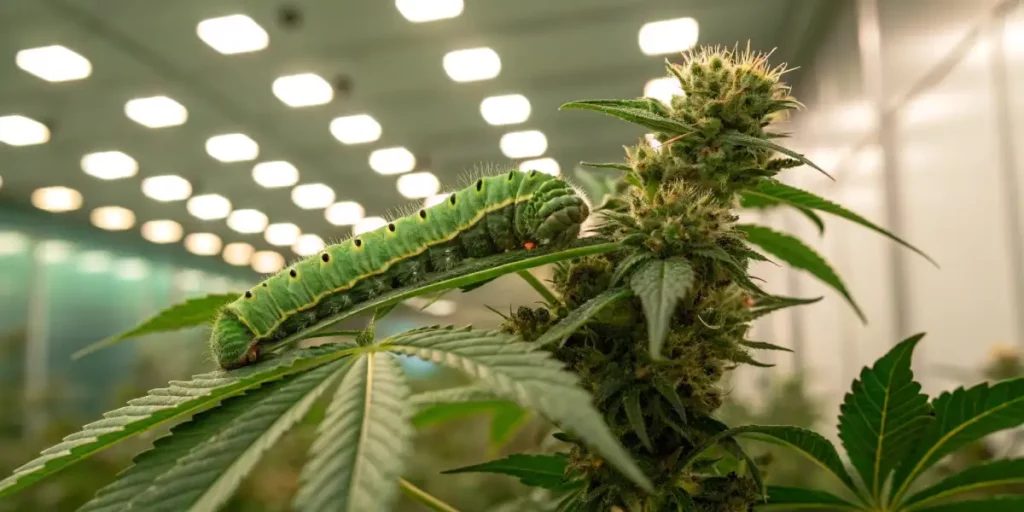
Natural Remedies for Green Caterpillar on Cannabis
For those looking for an organic solution, there are several natural remedies. One popular method is the use of Bacillus thuringiensis (Bt), a naturally occurring soil bacterium that is lethal to caterpillars. It’s available as a spray and is safe to use on cannabis plants.
Another natural remedy is introducing beneficial insects. Predators like ladybugs, lacewings, and certain wasp species feed on caterpillars and can help control their population. Neem oil is another natural insecticide that can deter a wide range of pests.
Preventing Caterpillar Infestations in Your Cannabis Crops
- Healthy Plants: Maintain vigorous plants, as they are more resilient to pest attacks.
- Comprehending the Risk: In outdoor grows, butterflies lay their eggs directly on flowers. Their secretions can promote fungi and diseases.
- Regular Inspection: Frequently check for caterpillars, eggs, or leaf damage, especially during early flowering.
- Biological Controls: Introduce beneficial insects like ladybugs or apply Bacillus thuringiensis (Bt).
- Physical Barriers: Use fine mesh netting to prevent moths from laying eggs.
- Increase Airflow: Caterpillars and the moths that lay their eggs are bothered by wind. Increasing ventilation in your grow space can make the environment less hospitable for them and help prevent them from settling on your plants.
- Proper Sanitation: Regularly remove dead leaves and debris to eliminate hiding places.
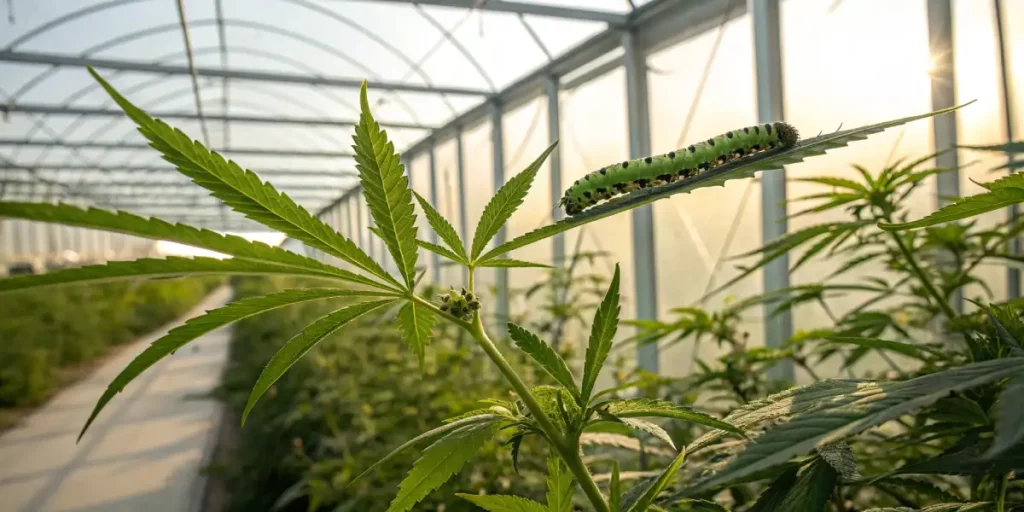
FAQs about Green Caterpillar on Cannabis
What are the signs of a caterpillar infestation on cannabis?
The most obvious sign is the caterpillars themselves, but they are often well-camouflaged. Look for other signs such as irregular holes on leaves and buds, and tiny black specks, which are caterpillar droppings (frass).
Are green caterpillars harmful to humans?
The caterpillars themselves are not directly harmful to humans, but some species have hairs that can cause skin irritation. It’s best to use gloves or tweezers when handling them. The real danger is the mold they can introduce to the buds, which is harmful if consumed.
How often should I inspect my plants for caterpillars?
As a general rule, you should inspect your plants at least once a week, especially during the flowering stage. Check thoroughly, including the underside of the leaves where they often hide and lay eggs.
Can caterpillars infest indoor cannabis plants?
While more common outdoors, they can also infest indoor plants. Moths and butterflies can find their way indoors through open windows or doors. It’s important to be vigilant even if you’re growing indoors.
What should I do with the caterpillars after removing them?
Dispose of them properly to prevent them from returning. Drowning them in soapy water is an effective method. Alternatively, release them far away from your garden.



